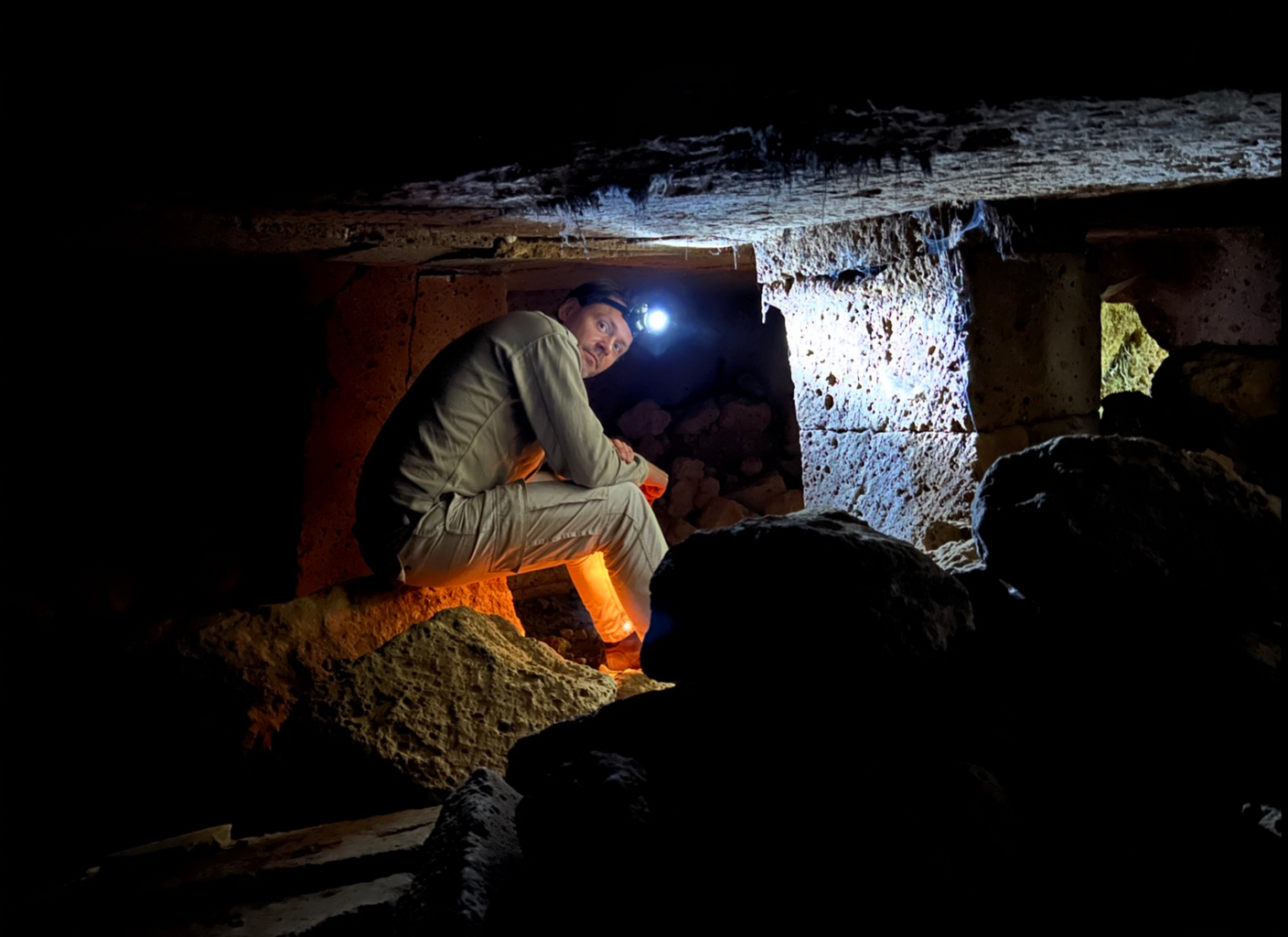By Rebecca Shavit
Copyright thebrighterside

Venturing into an Etruscan tomb once meant crawling through rubble, breathing dust, and crawling into rooms excavated more than 2,500 years ago. Now, it is possible to do so from a computer, even a virtual headset. A team of Swedish archaeologists has digitally recorded some 280 tombs in Italy, opening up a window through which anyone could visit those places virtually.
University of Gothenburg research engineer Jonathan Westin has felt the weight of history in these locations directly. He recalls crawling along constricted tunnels near San Giovenale, north of Rome, to make scans. “We are never the first through these sites – shepherds and farmers have passed through them and archaeologists have recorded them for more than a century.”. But sometimes it looks like time has been suspended, and we are invading an eternal silence,” he says.
The virtual portal integrates decades of work by the Swedish Institute in Rome with state-of-the-art 3D recording. Archaeologists relied on plumb bobs, sketchbooks, and measuring tape. Now, technology like photogrammetry and laser scanning facilitates precise modeling of every tomb. These are correlated to a database where scholars and students can view structures, review details, and even measure things.
Plumb bobs, tape measures, and field notebooks must now coexist alongside photogrammetry, laser scanning, and databases,” Westin adds. The project has opened a new path for the study of ancient cemeteries without breaking their sensitive environments.
Most of these tombs are very hard to reach for archaeologists. Some are distant from modern roads, and one must walk an extended distance over rough country to access them. Others entail crawling through devastated passages.
Westin recalls conditions that were nearer to entering a cave than excavating an historical site. “Oftentimes you squirm through debris in what, to the person who doesn’t know what they are seeing, could be a cave. The air is full of dust, and you consider how far from help you might be if something goes wrong.”
The new web platform bypasses these obstacles. With 3D scans, researchers, students, and even one-off visitors who might never step foot in Italy can now access rooms that were once inaccessible.
As well as the portal, the project also developed a Virtual Reality app. The aim is not just to give people a look but a sense of actually being inside the tombs. For scholars, VR is the chance to study details up close. For students and the masses, it offers an experience, bringing ancient architecture into classrooms and living rooms alike.
“Most importantly, the 3D scans allow people who have never been able to travel to these sites or dive down into the chambers to experience and extract new information for the first time,” Westin says.
The Royal Swedish Institute in Rome, which cooperated with the University of Gothenburg on this project, has a long history involving Etruscan archaeology. Since its founding in 1925, it has been at the vanguard of the excavations in southern Etruria.
In the 1950s, significant excavations were newsworthy both in Sweden and Italy, in part because of an association with a king. King Gustav VI Adolf, himself an archaeologist with interests in ancient cultures, took personal part in the excavations. He remained personally involved until the year before his death in 1973.
“The excavations generated much media attention, both within Sweden and Italy, primarily because King Gustav VI Adolf was present,” says Hampus Olsson, senior lecturer at the Swedish Institute in Rome. Now, the institute’s library remains one of the world’s finest centers for research into Etruscan culture, drawing researchers from around the globe.
The new database is not a final product but a live one. Researchers intend to add more sites and make it a utility that will not only help Sweden and Italy but global researchers as well. From 2026, students at the University of Gothenburg will be utilizing the portal in their training. Work in Rome will include hands-on training in 3D scanning, data collection, and web publishing, providing young archaeologists with the chance to combine field methods with high-level technology.
Westin and his team believe that as the portal is developed, it will enhance both education and research. For archaeologists who cannot physically visit the tombs, the digital archive provides a new kind of access. For teachers, it is a way to get people interested in ancient history without huge amounts of travel and fragile artifacts.
With the digitization of hundreds of Etruscan tombs, Swedish researchers have opened up cultural heritage to the world. The initiative allows students and researchers to see inaccessible places without risk to themselves or to the fragile remains.
Virtual Reality offers an extra level, with immersive learning materials which can ignite interest in archaeology. For researchers, the virtual archive allows data to be studied several times without desecrating the original tombs.
In time, the material might be able to save information about sites that could erode or fall apart, making ancient history still available for people in the future.
Pre-Roman Civilization: The Etruscans occupied central Italy (mainly modern-day Tuscany, Lazio, and Umbria) from the 8th to the 3rd centuries BCE, before they were assimilated into Rome. They greatly influenced Roman culture, religion, and architecture.
Mysterious Language: The language of the Etruscans was non-Indo-European and is still only partially deciphered. While there are inscriptions, much of the literature and writing has disappeared, making their culture somewhat mysterious.
Urban Builders and Engineers: They were skilled city planners and engineers who constructed sophisticated drainage systems, roads, and temples. The Romans adopted most of their engineering methods, including the invention of the arch.
Religion and Rituals: The Etruscans practiced polytheism, and their religious rituals—specifically divination, augury (reading the gods’ intentions from birds), and haruspicy (reading animal entrails)—were assimilated into Roman religious practices.
Art and Legacy: They were masters in the art of death art, bronze, and pottery. Their luxuriously ornamented tombs, including frescoes depicting banquets, dancing, and everyday activities, reveal much about them. Roman gladiatorial games also allegedly traced their origin to the Etruscan funeral rites.
Visit the portal: https://etruscan.dh.gu.se/
Like these kind of feel good stories? Get The Brighter Side of News’ newsletter.



